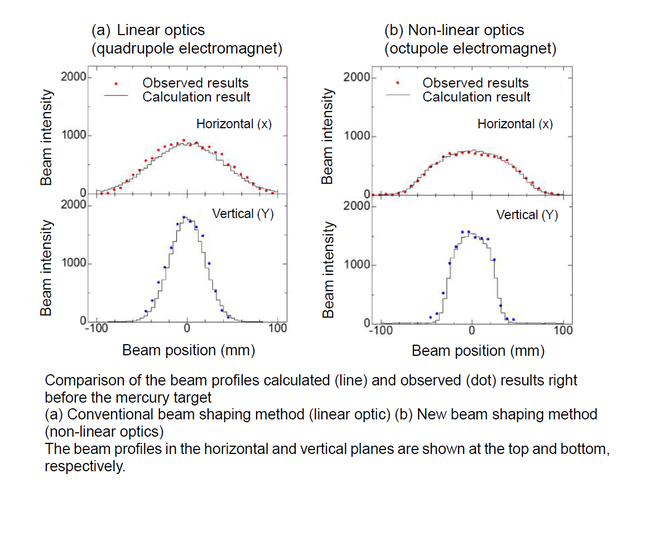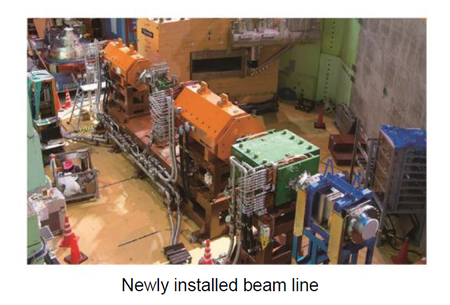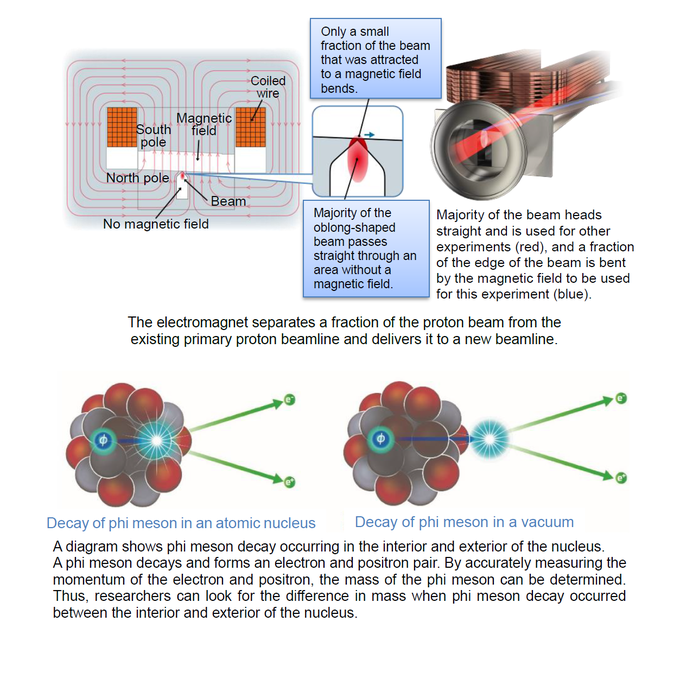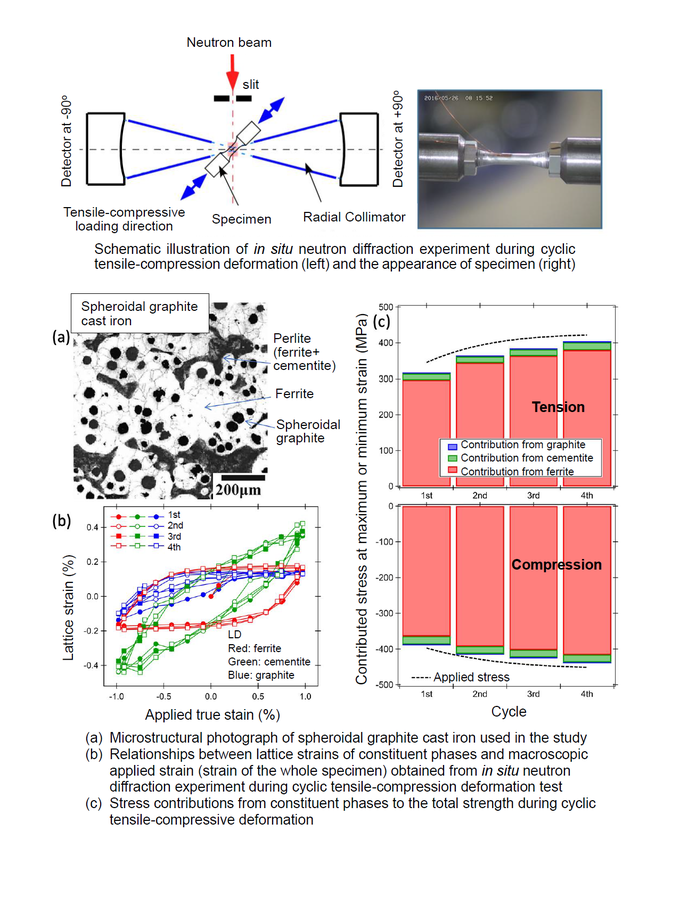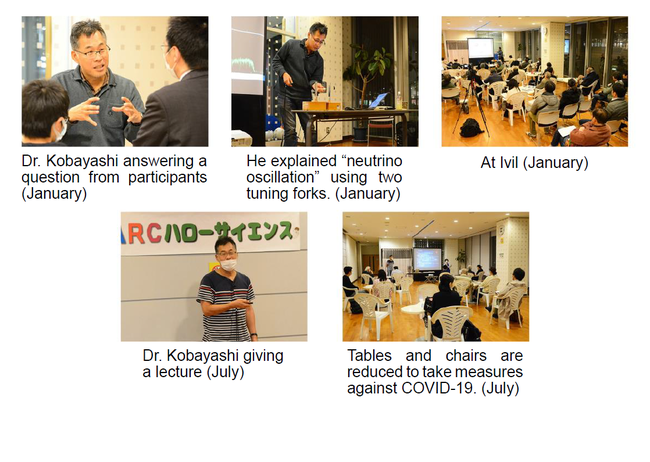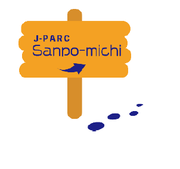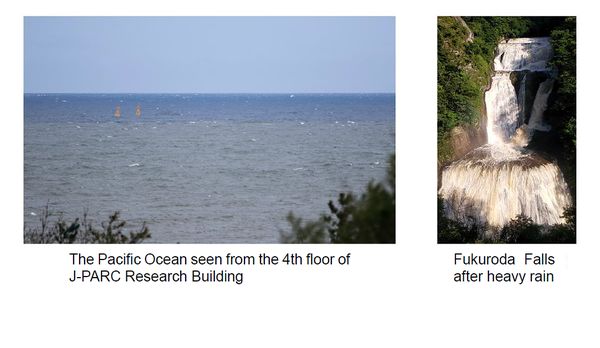J-PARC News August 2020 (Issue #184)
■ Tokai Village, KEK sign "Agreement on Facility Use in Event of Disaster" (August 4, Tokai Village Office)
On August 4, the Inter-University Research Institute Corporation High Energy Accelerator Research Organization (KEK) and Tokai Village have signed "Agreement on Facility Use in the Event of a Disaster." This agreement aims to make J-PARC users’ accommodations available to use as evacuation shelters upon request of the Tokai village for cooperation in the event of a disaster in the area. The conclusion ceremony was held at the Tokai Village Office. With J-PARC Center Director Naohito Saito and Deputy Director Tadashi Koseki attending, Tokai Village Mayor Osamu Yamada and KEK Director General Masanori Yamauchi signed the agreement. The conclusion of this agreement may be the opportunity to promote collaboration with the local government of Tokai Village, not only in the event of a disaster, but also in normal times.
■ Development of High-intensity Proton Beam Control Technology at Neutron Source Facility of Materials and Life Experimental Science Facility (MLF) -Beam Shaping Method Using Non-Linear Optics Reduces Damage to Target, Contributes to Safe Operation of Facility- (July 22, Press Release)
In the neutron source facility at Materials and Life Experimental Science Facility (MLF) of J-PARC, a high-intensity proton beam accelerated to 3 billion electron volts (3 GeV) is applied mercury target to generate neutrons. Because the steel container used for the mercury target takes damage due to the exposure of a high-intensity proton beam, the beam current density on the target container must be lowered to reduce the damage and to maintain stable operation of the facility. Usually, the beam has the highest current density in the center. It forms a bell-shaped distribution curve (Gaussian distribution), in which the current density decreases as the tail of the curve. In the common beam shaping method (linear optics), the width of the beam is adjusted by a magnet (quadrupole electromagnet) that has the property that the magnetic field increases linearly as the distance from the center of the magnet. With this method, the shape of the beam that has a Gaussian distribution remains. But, if the width of the distribution is widened to reduce the current density at the center, the tail of the beam extends further and hits the structural material surrounding the target. On the other hand, by using a special magnet (octupole electromagnet) in which the magnetic field increases in the form of a cubic function, it is possible to deflect only the particles in the tail of the beam to the center and shape a flat beam. However, this shaping method with the non-linear optics is difficult to put into practical use with high-intensity beams, because the adjustment of parameters such as magnets is complicated and may cause beam loss. Shinichiro Meigo, JAEA Senior Principal Researcher, and his colleagues at the J-PARC Center developed this beam shaping method and found that the beam shape can be represented by only two parameters of the octupole magnet filed normalized by the beam emittance and the phase advance between the octupole magnet and the target under all conditions. In addition, they have found optimal values for the two parameters to shape the beam into a flat profile without causing beam loss. In fact, at the MLF neutron source facility, the world's first beam shaping with non-linear optics was performed at the megawatt (MW) class high-intensity accelerator facility, and it was confirmed that the beam shape obtained was as predicted in the calculation. As a result, the current density of the beam on the mercury target was reduced by 30%. The findings of this study are expected to contribute to stable beam operation at J-PARC's neutron source facility as well as future high-intensity accelerator facilities, there-being more improvement in the safety of accelerator facilities.
■ Operation of New Beamline at J-PARC Hadron Experimental Facility Started (August 11, Press Release)
The new proton beamline, which had been prepared at the Hadron Experimental Facility at J-PARC, passed the facility inspection by a third-party organization on June 24th. Consequently, the operation of the beamline and an experiment carried out at the beamline started. The Hadron Experimental Facility has conducted experiments using secondary particles such as K-mesons, which were created by irradiating proton beams, accelerated by J-PARC's main ring (MR) accelerator, to the target. In the new beamline, the proton beam, which has the highest energy in Japan, is directly used in the experiment; this will diversify the types of experiments conducted at the Hadron Experimental Facility. A very small fraction of the proton beam is separated from the existing beamline that leads the proton beam to the Hadron Experimental Facility where the proton beam is used for producing secondary particles; thus the existing beamline receives very little effect. Then, the separated proton beam is directed to the new beamline. This was achieved through development of an innovative electromagnet design for the branching region. In the newly started beamline, experiments have begun to answer the question of whether mass is modified depending on the surrounding environment. According to the theoretical calculations proposed by Professor Yoichiro Nanbu, a 2008 winner of the Nobel Prize in Physics, mass is modified in an environment with very high density, such as an atomic nucleus. The experiment will take accurate measurements of the mass of phi mesons, produced by irradiating proton beams into a target, interior and exterior of the nucleus to search for a difference. Thus, the experiment will include detector calibration and data collection.
■ Elucidation of The Strengthening Mechanism of Cast Iron with High-Intensity Neutron Beam –Atomic Level Observation of Microstructure Behavior of Cast Iron by In Situ Neutron Diffraction Experiment– (August 25, Press Release)
Cast iron (spheroidal graphite cast iron) is widely used in casings for hydraulic equipment in construction machinery and in various parts of automobiles. Thus, cast iron is required to withstand large external forces and have a long life in extreme loading conditions. Spheroidal graphite cast iron showed an increase in the strength when it was subjected to the cyclic tensile-compressive deformation which was conducted to simulate the extreme loading condition; however, the mechanism remained a mystery. To elucidate the mechanism, Stefanus Harjo, JAEA Principal Researcher, from J-PARC and his colleagues conducted an in situ neutron diffraction experiment of a spheroidal graphite cast iron using the Engineering Materials Diffractometer (TAKUMI) during a cyclic tensile-compressive deformation test. Thanks to the high-intensity neutron beam of J-PARC and the high resolution of TAKUMI, the experiment with high accuracy has been successfully conducted. When an external stress is applied, the crystals of constituent phases in the spheroidal graphite cast iron are distorted, which appear as shifts in the diffraction peak position. By quantitative analyses of the peak shifts, stresses accommodated in individual constituent phases can be evaluated. In addition, information on dislocations (a type of crystal defect) can be also derived from the width of diffraction peaks. From this study the revealed results are as follows. With progressive cyclic tensile-compressive loading, dislocations accumulated in ferrite, which was the major constituent phase of spheroidal graphite cast iron, resulting significant increases in the strength of ferrite, and subsequently contributed to the increase in strength of graphite cast iron. Understanding the properties of spheroidal graphite cast iron under the extreme loading condition, will provide design feedbacks for safe use and longer life. In addition, this finding help us also to gain a basic understanding of the phenomena occurring in spheroidal graphite cast iron, and contributes to the design of materials that are suitable for the environment where they are used.
■ J-PARC Hello Science –Held a Sequel to “Investigating the Origin of Matter in the Universe with Mysterious Neutrino Particles”– (July 31, Tokai Industry and Information Plaza “iVil”)
Takashi Kobayashi, Head of the Particles & Nuclear Physics Division, J-PARC Center, gave a second lecture about neutrino. This was a sequel to the lecture he gave last January that was about the “goals of the neutrino research.” This time, he talked about the “T2K experiment” and the “Hyper-Kamiokande (HK) project.” The T2K experiment is currently underway as an international experiment using J-PARC and the Super-Kamiokande (SK), a neutrino observatory in Kamioka, Gifu Prefecture. He gave extensive explanations on the J-PARC facilities and equipment, which are used to produce neutrinos, and neutrino observations at SK. In regard to achievements made in the T2K experiment, he added that researchers successfully discovered muon neutrino oscillating (changing) into electron neutrino for the first time in history and observed slight hint of neutrinos and antineutrinos having different properties at more than 90% probability. The Hyper-Kamiokande project, which has about 10 times the sensitivity of SK, was launched this year. The project aims to start operation in 2027 to collect more data in order to increase the measurement accuracy. Many participants commented in the questionnaires that his explanation on the advanced research was very straightforward.
 ■ J-PARC Online Open House 2020
■ J-PARC Online Open House 2020
This year’s J-PARC Open House will be started on the Web on October 7, Wednesday. Also, there will be a live stream on October 10, Saturday! For more details, please refer to the J-PARC’s Web site. (http://j-parc.jp/c/information/2020/09/14000587.html)
■ Sanpo-michi #1 ~Go for a stroll around J-PARC~
J-PARC is one of the few privileged research facilities that offers the researchers a beautiful ocean view.
This photo was taken from a little kitchen on the east side of the 4th floor of J-PARC Research Building. The Pacific Ocean extends from a pine forest. It is only 200m from here to the beach fence. By looking at the color of the ocean, you can tell that it is clearly divided into two colors in the horizontal direction. The area near the beach is light green, and the offshore is dark blue. Why are there such color differences?
The reason for the green color in the foreground is simply an effect of muddy stream from the Kuji River, which has an estuary 3km north of the facility. The day before, heavy rain fell in the northern part of Ibaraki prefecture. A lot of sediment was eroded from upstream of the Fukuroda Falls, which is one of the three famous waterfalls in Japan, and flowed into the Pacific Ocean. Now that the weather has improved and the sun is shining into the sea, the difference in color is very distinguishable.
If the sunny weather stays in the region, the color of the entire sea will change to deep blue in a few days.
The "J-PARC Sanpo-michi" has debuted. From time to time, staff from the public relations section will share daily reflections with the readers.


